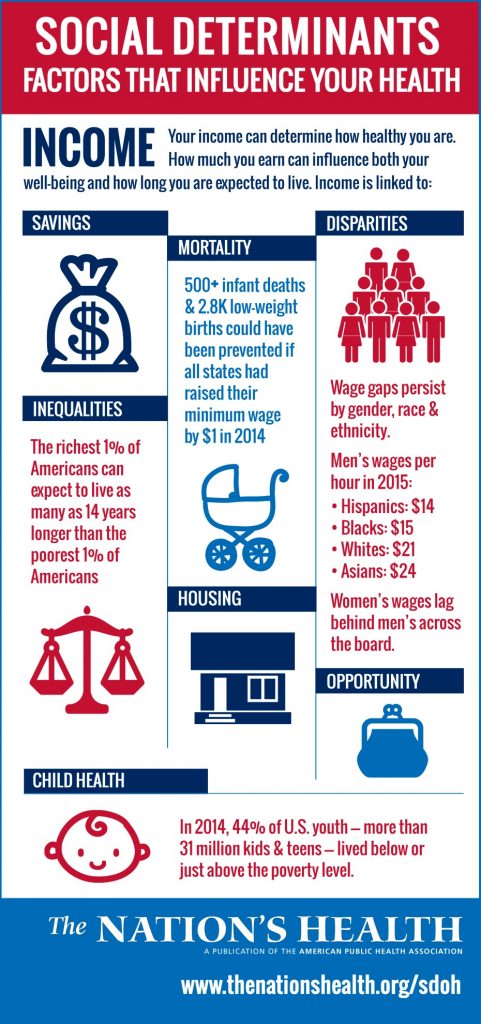Being healthy is expensive. There are the clearly established barriers in a lack of resources (access to nutritious food, treatment and medication costs, inconsistent insurance, etc) and lack of preventative services (dental, health, etc) which can result in more costly after-the-fact treatment. These expenses resulting in poor health and lack of treatment are crucial when discussing poverty and health, but these clearly established effects of poverty are not the only ones. There is growing research to indicate that there are effects of poverty on health that are not directly related to access to healthcare. Some examples include living in a more polluted environment and the constant stress of making ends meet contributing to health deterioration and complication.
It is also the case that some people are pushed into poverty by medical expenses, and living in poverty further negatively effects health in what becomes a feedback loop for many. Public health initiatives in the United States are gathering research on what policies and programs can help to address these complicated factors like poverty that affect so many parts of a person’s life and health. Federal initiatives like Healthy People 2020 have had social determinants of health as leading health indicators. The complexity of how each determinant affects the others means that more collaborative and innovative policies and programs are needed to support people to have every opportunity to be healthy.
Join us for a webinar all about poverty, anti-blackness and gender next Friday, 3/13/20 at 12. Register here: http://bit.ly/abpchta

Infographic titled Social Determinants: factors that Influence Your Health
Income: Your income can determine how healthy you are. How much you earn can influence both your well-being and how long you are expected to live.
Income is linked to:
Savings
Mortality: 500+ infant deaths and 2.8 thousand low-weight births could have been prevented if all states had raised their minimum wage by $1 in 2014.
Housing
Disparities: Wage gaps persist by gender, race, and ethnicity. Men’s wages per hour in 2015: Hispanics $14, Blacks $15, Whites $21, Asians $24. Women’s wages lag behind men’s across the board.
Opportunity
Inequalities: The richest 1% of Americans can expect to live as many as 14 years longer than the poorest 1% of Americans.
Child Death: In 2014, 44% of U.S. Youth- more than 31 million kids and teens- lived below or just above the poverty level.
Cited from the Nation’s Health,: A Publication of the American Public Health Association

